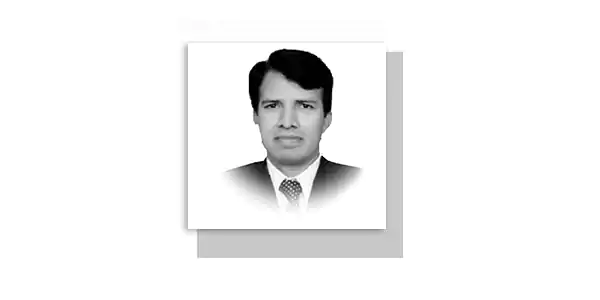With the advent of new technological advancements in the field of warfarethe forms and formats of the modern warfare have undergone drastic changes.
One of the salient features of this modernization in warfare is initiation of hybrid warfare and threats emanating from this form of warfare.
The contemporary academic and strategic communities are widely debating the facets of hybrid warfare and its likely future usages.
The term ‘hybrid threats’ or hybrid warfare is defined by scholars as; “A coordinated and synchronized use of military andnon-military instruments by state and non-state actors which deliberately harm or undermine the foundations of the targeted state (s)and its societies.
” The concept of harming the state may not be novel; nevertheless, strategies being used to implement the concept are modern, more destructive and detrimental for the targeted states and societies.
Whereas the theoretical concepts and emerging threats of the hybrid warfare are being studied by the militaries of various states, Pakistan is a classic example which has physically experienced the odd of hybrid warfare, launched by rival forces at regional and global level.
Apart from its past sufferance, Pakistani state and society are constantly suffering from this menace contemporarily.
There are five globally recognized trends/ strategies of hybrid warfare: a) exploitation of economic vulnerabilities, b) weaponization of widespread digitalization, c) distortion of reality, d) manipulation of societal polarization, e) diversification of tools and actors.
While targeting Pakistan, all these trends are being used by its rivals with more deliberation and sophistication.
Pakistan’s economic vulnerabilities have been created over the years and are now being exploited through various ways.
Through economic exploitations, Pakistan is being targeting further causing political instability, social unrest and unending threats of militancy and terrorism.
Unfortunately, this is an ongoing process in Pakistan and likely to prevail in the foreseeable future.
Weaponization of widespread digitalization means creating through highly accessible channels to spread disinformation, planting discord within the society.
In Pakistan this strategy contribute to create violence, persecution and exploitation.
Through massive use of uncontrolled social media, the reality about Pakistani state and society is totally distorted while creating a chaotic situation for causing further unrest in the country.
These three factors further create social polarization with multiple contributory factors like exploitation of existing fault lines and creating new fault lines based on ethnicity, provincialism, sectarianism and political affiliations; all are being used to destabilize the state and cause unrest in the society.
In order to achieve maximum benefits, the rival forces devise multiple tools and actors.
This becomes a relationship of cause and effect.
The masses do not realize even that they are harming their own state and society on behest of rival forces.
This entire circle is very dangerous and causing lot of damageto Pakistan.
As opined by experts of this form of warfare, 21st century will be governed by hybrid warfare; a total transformation in the format of traditional warfare.
Primarily this warfare is a military strategy which combines; cyber warfare, irregular warfare and political means.
The distinct patterns, the modus operandi used in hybrid warfare include; spreading fake news through highly known media houses, making use of diplomatic means, law-fare and foreign electoral intervention through construction of new narratives.
Precisely, hybrid warfare is non-kinetic operations with subversive efforts where aggressor intends to avoid attribution and retribution.
The impacts of hybrid warfare are more pronounced after Pakistan experienced and combated the global war on terror from 2001 to 2021.
Along with the resurgence of terrorism from Afghan soil after Taliban took over Afghanistan in 2021, there is a sudden rise of sub-nationalism and defamation of Pakistani Military.
Social and electronic media are the main source of this targeted anti-Army campaigning.
This campaign had two dimensions; domestically the politicization of Pak Army aims at defamation of this institution, since it has been the most popular institution of Pakistan, loved by masses ever since Pakistan came into being.
Externally it appears that after having failed in their strategies and efforts of weakening the Pakistan through direct approach, the regional and global forces have adopted indirect strategies to weaken Pakistan and its military.
The distinctive feature of this campaign is war of narratives, perceptions and opinion making being implemented through hybrid warfare.
In the last few years through the use of hybrid warfare, launched through social media, some of mainstream media groups and human rights organizations, the hostile forces have been widely influencing the masses particularly the youth in Pakistan.
They are propagating pessimistic narratives against Pakistan and its key institutions through social media.
The modern and emerging technologies and the effects of globalization have created new instruments for hybrid warfare where threats have intensified the vulnerabilities in different domains.
Since there is an increase in the scale, speed and reach of hybrid threats therefore, Government and people of Pakistan should understand that, “playing field for hybrid actors is expanding as the boundaries of engagement broaden.
” The most significant fact is that the there is a synchronization of the abovementioned five trends and strategies of hybrid warfare against Pakistan.
There is a synergizing effect of strategies for widespread and spontaneousdamages to Pakistan at the shortest possible timeframe.
Pakistan needs to devise the strategies to counter the threats of hybrid warfare at every level; state, government, institutions, provinces, media, educational institutions and in the wider social fabrics.
— The writer is Professor of Politics and IR at International Islamic University, Islamabad.










